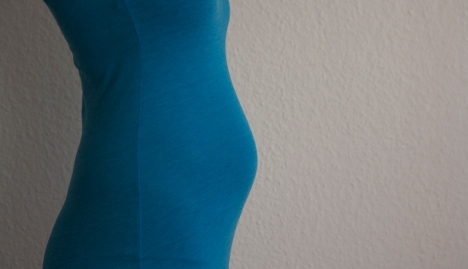At 18 weeks, I feel like I’ve already run the gamut of pregnancy side-effects. The queasy mornings and aching breasts of the first trimester have morphed into back aches and a host of digestive woes — and I haven’t even hit the halfway point.
If I were back home in Canada, I’d probably walk into a pharmacy and purchase a suitable medication thought safe for pregnant women. But in Germany doctors and chemists encourage a more natural remedy. Yes, to cure what ails during pregnancy, there’s a tea for that.
“It’s a tea-drinking culture here,” the pharmacist at my local Apotheke explained. “It’s very old, dating back to when monasteries were also healing places for the sick, and now it’s practically a tradition to turn to tea first.”
As someone used to finding a pill to cure my little complaints, I’ve actually been happy to dose myself with tea. Being pregnant means I’m extra careful about what I put into my body, and having natural alternatives that actually work is a great comfort.
“Every pill package here comes with a warning saying that the product is not tested on pregnant women. I would hate for someone to come into my pharmacy and say ‘you recommended that I take this to treat my cold and now my child has a birth defect’,” my pharmacist said.
In my first trimester, I was fortunate enough to have a fairly easy time with morning sickness – most of it went away when I ate breakfast – but peppermint tea also would have helped, I was told.
After discussing digestive issues with my obstetrician-gynaecologist, she wrote me a prescription, but told me to try fennel tea, or Fencheltee, first. I have yet to fill the prescription and will probably stick to the tea.
Against the leg cramps that I’m waiting to start any day now, I’m to drink chamomile tea, or Kamillentee. To combat the increased mucous my body produces (“A totally normal thing,” says my doctor), I drink the occasional cup of thyme tea, or Thymiantee.
There is even an herbal tea mixed specifically for pregnant women, appropriately called Schwangerschaftstee, or “pregnancy tea.” I got my leafy mixture at my local Apotheke, where the pharmacist explained that the particular brand, mixed by Bahnhof Apotheke, came highly recommended by Ingeborg Stadelmann, midwife and author of a well-known German guide to pregnancy. You can also find the tea at organic grocery shops and local drug stores.
The blend varies and most pharmacies work with midwives to make their mix, but almost all agree they should have Alchemella or Lady’s Mantle (Frauenmantel), lemon balm (Zitronen Melisse), nettle (Brennnesseln) and raspberry plant leaves (Himbeerblätter). The first two ingredients are meant to calm and relax while stabilising the influx of hormones in the body. Nettles help the body build up the extra 30 percent blood flow it needs to support the work of growing a baby. The raspberry leaves are the most important. They contain vitamin C, important for boosting my weakened immune system, and calcium and iron to boost the baby’s growing bones.
But as wholesome as it sounds, the tea isn’t the tastiest and I have a hard time swallowing the recommended two to three cups a day.
But progressing through my pregnancy and beyond, I can look forward to many other infusions. The pharmacist told me to stop by before my final month of pregnancy to get a blend with more raspberry plant leaves. This is meant to prepare me for birth by relaxing the cervix, which I learned from her has the cringe-worthy name of Muttermund, or “mother mouth.”
After Baby Devins makes its entry into the world, I’ll have to stop drinking peppermint tea, as midwives say it hinders milk production, and switch to a blend of breastfeeding tea (Stilltee), made of fennel, caraway, anise and fenugreek. According to my experienced mom friends, it’s delicious.
The same midwives who put together the Schwangerschaftstee also blend teas for the postnatal recovery time, called Wochenbett, which will help my body deal with another roller coaster of hormones as it goes back to its new normal.
If I were an expat in the North America, I wouldn’t have as many natural options. The US Food and Drug Administration says more than two-thirds of pregnant women there take some sort of prescription drug during their pregnancy. The same organization cautions against drinking too much herbal tea, claiming it is unknown how some herbs affect the foetus – not something German health experts seem too worried about.
In Canada I would also struggle to find German-style herbal tea blends to help calm my hormones or clear my sinuses. Former Berliner Susanne Wengenmeier told me that after moving to Vancouver she misses the tea remedies she found so readily available and effective during her time in the city.
“I was in the drug store and went to their ‘natural’ section to find the teas that cure everything and there was nothing! I was so disappointed,” she said. “I then felt really German.”
But if there is one complaint I have about steeping away my ailments, there is one persistent pregnancy problem that the teas definitely do not help – my ever-shrinking bladder.



 Please whitelist us to continue reading.
Please whitelist us to continue reading.
Member comments